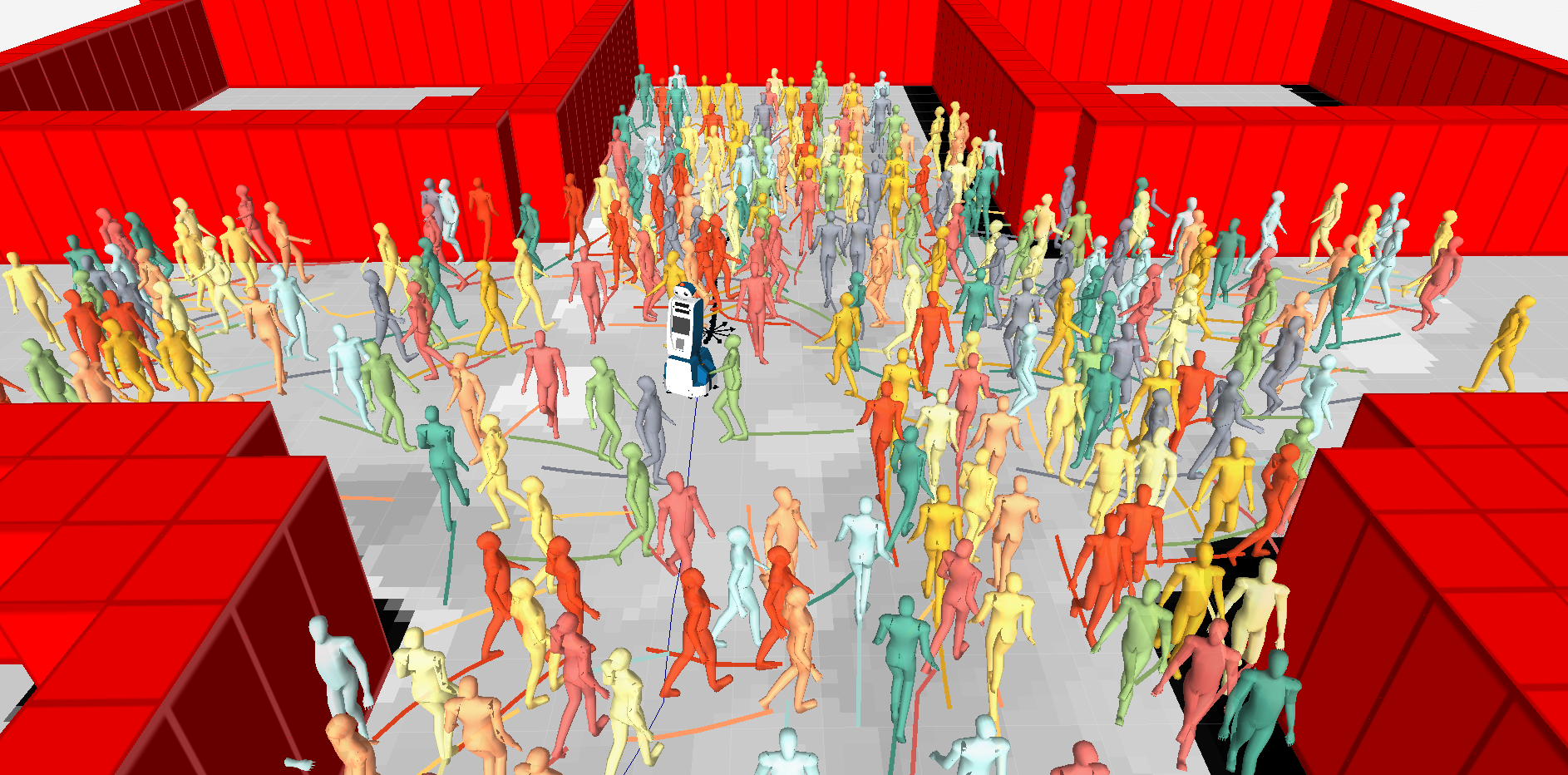Social Force Model for Pedestrian Dynamics
It is suggested that the motion of pedestrians can be described as if they would be subject to `social forces'. These `forces' are not directly exerted by the pedestrians' personal environment, but they are a measure for the internal motivations of the individuals to perform certain actions (movements). The corresponding force concept is discussed in more detail and can be also applied to the description of other behaviors. In the presented model of pedestrian behavior several force terms are essential: First, a term describing the acceleration towards the desired velocity of motion. Second, terms reflecting that a pedestrian keeps a certain distance to other pedestrians and borders. Third, a term modeling attractive effects. The resulting equations of motion are nonlinearly coupled Langevin equations. Computer simulations of crowds of interacting pedestrians show that the social force model is capable of describing the self-organization of several observed collective effects of pedestrian behavior very realistically.
PDF Abstract
